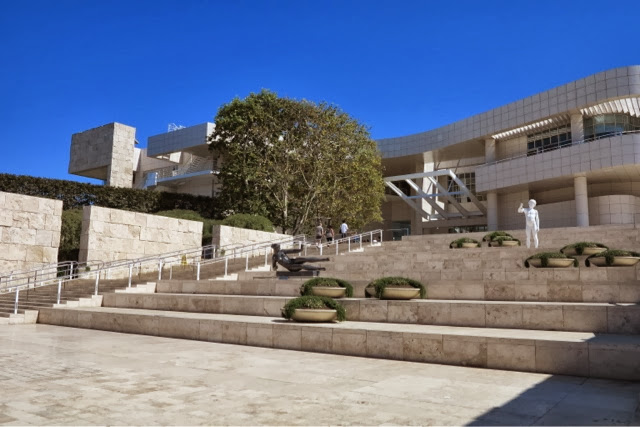Tuesday 24 September 2013
Los Angeles: cars, cathedrals, cops and more
Monday 23 September 2013
Disney and Gehry: two showmen
Getty Center
It is one of two locations of the Getty Museum. This branch of the museum specializes in "pre-20th-century European paintings, drawings, illuminated manuscripts, sculpture, and decorative arts; and 19th- and 20th-century American and European photographs". Among the works on display is the painting Irises by Van Gogh. Besides the museum, the center's buildings house related Getty institutes for research, conservation, and the Getty Foundation.
The center also has outdoor sculptures displayed on terraces and in gardens. Designed by architect Richard Meier the campus includes a central garden designed by artist Robert Irwin. GRI's separate building contains a research library with over 900,000 volumes and two million photographs of art and architecture. The center's design included special provisions to address concerns regarding earthquakes and forest fires.
Did I like it? Yes, but...
It is wonderfully impressive, from the moment you roll up at the (Getty's own) car park, sunk 7 levels into the hillside, get onboard the (Getty) automatic train to take you to the top of the hill, to the knowledgable volunteer guides who give side tours on the architecture and the gardens. The setting, and thus the views from the top, are spectacular. The landscaping is fabulous "money no object", and I particularly liked all the open, and shaded spaces between the buildings. Richard Meier specialises in white buildings, with a very formal grid applied to the exterior, and you can love or hate this, or in my case tire of it (his museum in Barcelona is just the same). I did like, very much, the Italian stone used everywhere, in a rough unpolished finish.
However an art museum is really all about the internal spaces in which the art is displayed and I don't think the Getty is always successful. Some gallery rooms seemed surprisingly small, the art spaces quite cramped. The quality, though, was exceptional. I particularly liked the rooms given to French Decorative Arts: walls, ceiling, floors all beautifully installed into Meier's white boxes.


































































